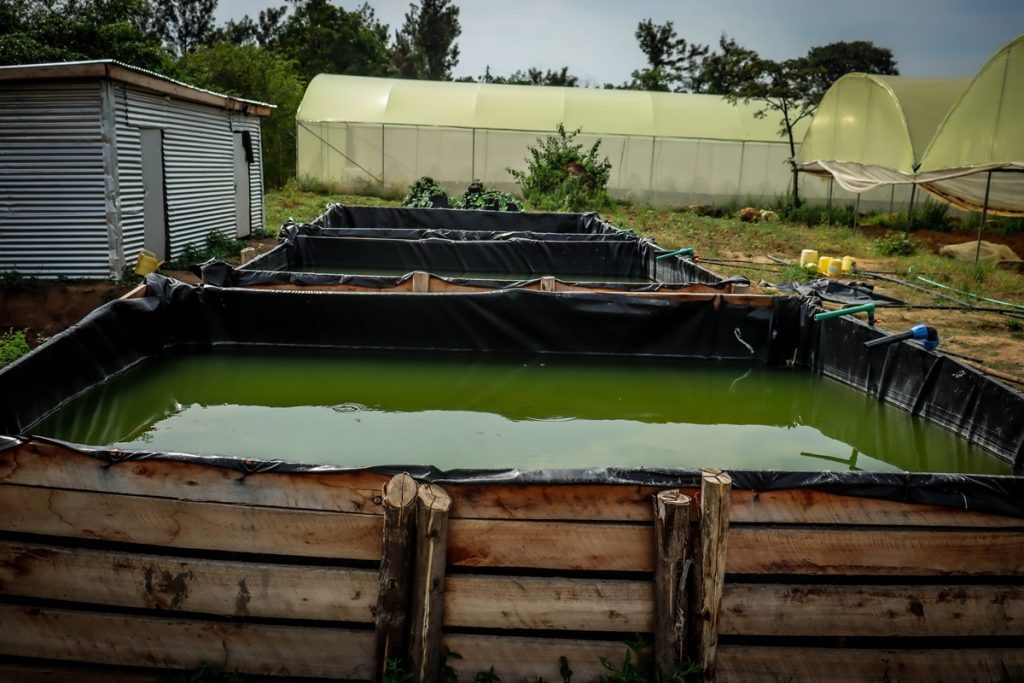
MAIL US :
info@samakivillage.com
CALL US :
+254 732 781 626
LOCATION :
Seme Dala
Menu
info@samakivillage.com
+254 732 781 626
Seme Dala

Fish farming is an increasingly important aspect of modern agriculture, providing a reliable source of protein and income for communities around the world. Effective fish pond management is key to maintaining a healthy and productive fish farm. Whether you’re just starting or looking to improve your current operations, proper management practices can significantly enhance fish growth, water quality, and overall pond health.
In this blog post, we’ll explore best practices in fish pond management, focusing on water quality, feeding strategies, disease control, and pond maintenance to ensure the success and sustainability of your aquaculture venture.
Water quality is one of the most crucial factors in fish farming. Poor water conditions can stress fish, reduce growth rates, and even lead to diseases or death. Here are key parameters to monitor and manage:
Fish need sufficient dissolved oxygen (DO) in the water to survive. Low oxygen levels can cause stress and slow down growth. Ensure proper aeration, especially in high-density ponds or during hot weather, when oxygen levels tend to drop.
The pH of the water indicates its acidity or alkalinity. Most fish species, such as tilapia and catfish, thrive in water with a pH range of 6.5 to 8.5. Extreme pH levels can harm fish health and reduce their ability to feed and grow.
Fish are cold-blooded animals, and their metabolism and growth are directly affected by water temperature. Different fish species have varying temperature preferences, so it’s important to maintain an ideal temperature range for the species you’re farming.
Feeding is one of the most significant operating costs in fish farming, but it’s also essential for ensuring rapid fish growth and optimal health. Proper feeding strategies can reduce feed waste and improve water quality.
Fish require a balanced diet containing the right amounts of protein, fats, and essential nutrients. Commercially available fish feed is specifically formulated to meet these needs. It’s important to choose feed that matches the life stage and species of fish you’re farming.
Overfeeding can lead to wasted feed, which decomposes and reduces water quality, while underfeeding can stunt fish growth. Establish a consistent feeding schedule that aligns with the fish’s needs at different stages of development.
The Feed Conversion Ratio (FCR) is a measure of how efficiently fish convert feed into body mass. A lower FCR indicates better feed utilization and cost efficiency.
Fish diseases can spread rapidly in pond environments, causing significant losses. Preventative management practices are essential for maintaining a healthy fish population.
Introducing new fish to an existing pond can expose your stock to diseases. Always quarantine new fish before adding them to the main pond.
Stagnant or polluted water encourages the growth of harmful bacteria and parasites. Keep water quality high through regular monitoring, water changes, and aeration.
Early detection is key to controlling fish diseases. Look out for common signs such as lethargy, discoloration, loss of appetite, erratic swimming, or visible sores.
Solution: If you detect a disease, consult with an aquaculture expert or veterinarian to properly diagnose the problem and apply suitable treatments, such as antibiotics or antifungal medications.

Transforming Agricultural Spaces with Innovative Solutions

